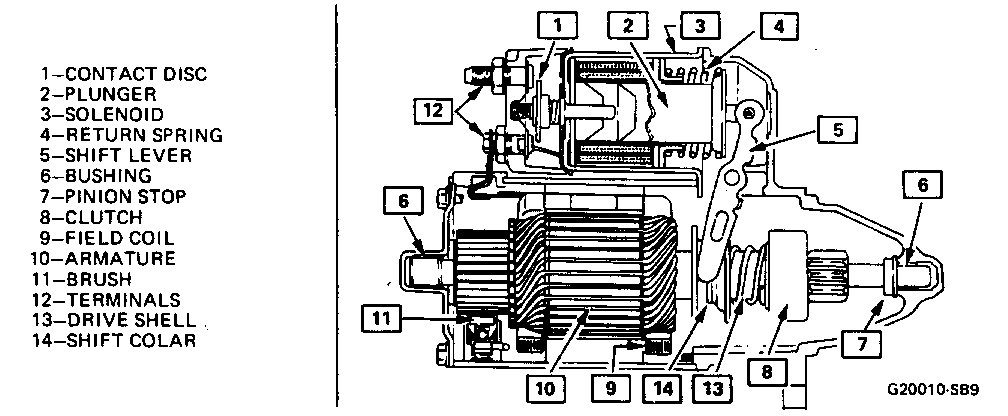5MT STARTER MOTOR CLICKS FAILS TO ENGAGE RING GEAR

MODELS:1983-85 C TRUCKS WITH 5.0L V8 (LE9/LF3) 1984-85 K TRUCKS WITH 5.OL V8 (LE9) AND MANUAL TRANSMISSION 1983-86 S/T TRUCKS WITH 2.0L L4, 2.8L V6 OR 2.5L L4 (LQ2, LR2, or LN8) 1985-86 M VANS WITH 2.5L L4 (LN8)
During a start attempt, if the solenoid "clicks" and the pinion fails to engage, follow the diagnostic procedures found in Section 6D of the Service Manual. Common causes of this condition include a discharged or defective battery, defective switches, excessive circuit resistance, and/or a defective solenoid.
If the condition remains after performing the above mentioned diagnosis, a possible cause may be failure of the shift collar to move on the drive shell in the drive assembly. When this happens, the shift lever movement is stopped, the solenoid contacts cannot close, and the result is a solenoid "click" with failure to crank the engine. This condition would occur only during a butt engagement, which is an infrequent, but perfectly normal occurence. Repeated attempts to crank usually result in immediate pinion engagement, and the crank attempt is successful. On a problem vehicle where none of the usual causes of a solenoid "click" are found, replacement of the drive assembly may correct the problem.

General Motors bulletins are intended for use by professional technicians, not a "do-it-yourselfer". They are written to inform those technicians of conditions that may occur on some vehicles, or to provide information that could assist in the proper service of a vehicle. Properly trained technicians have the equipment, tools, safety instructions and know-how to do a job properly and safely. If a condition is described, do not assume that the bulletin applies to your vehicle, or that your vehicle will have that condition. See a General Motors dealer servicing your brand of General Motors vehicle for information on whether your vehicle may benefit from the information.
